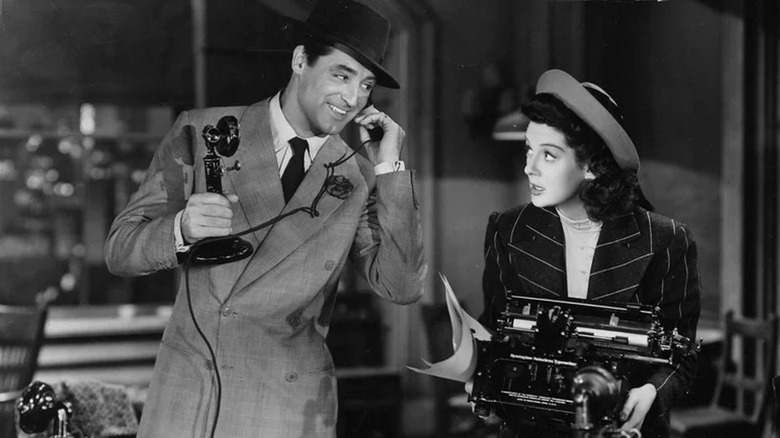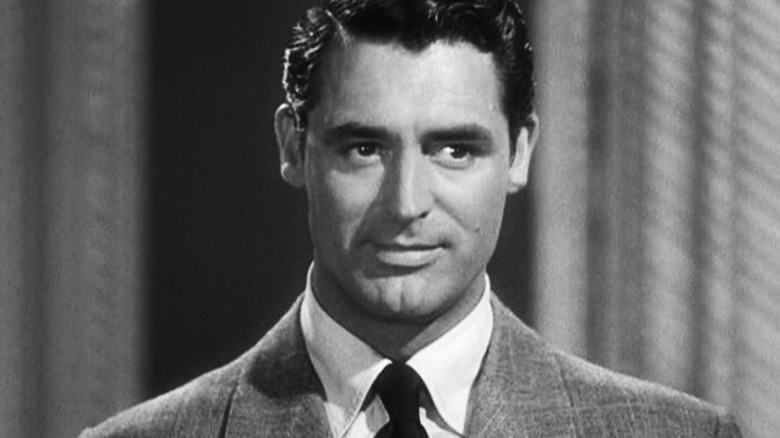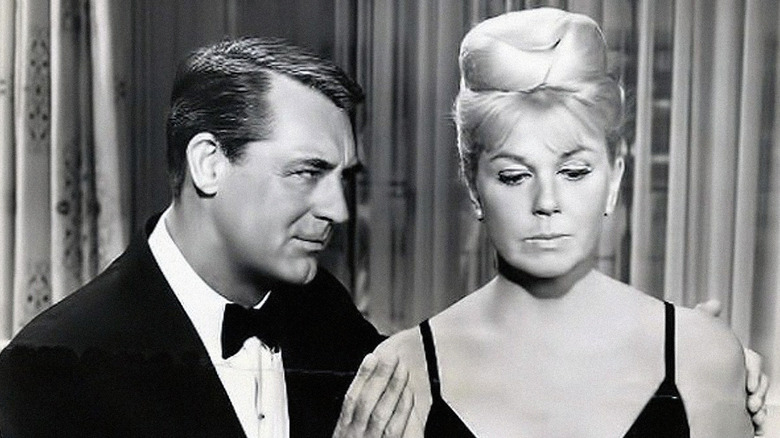Why Cary Grant Had To Wear His Own Suits In Movies
The days of the debonair hunk are slowly drifting away — but even if that archetype disappears entirely, I've got a feeling that Cary Grant will remain a paragon of style. It was his classic, immaculately-tailored style that first coined the term "debonair" in the first place, and ever since, Grant has influenced swaths of fashion-forward film lovers. Grant knew what he liked, and he rarely strayed from his staples. Fittingly, a lot of that informed the style of the characters he played. Grant often supplied his own wardrobe for his films — but maybe not for the reason you'd think.
Whatever suited Grant
Throughout his career, Grant was always forthcoming with style advice. He had an ongoing relationship with GQ, and apart from the comprehensive style guide he penned for the magazine in 1967, Grant later shared a few behind-the-scenes secrets about costuming in Hollywood — at least, when he was still holding it down as a leading man.
"In the movies, all men paid for their own wardrobes," Grant told GQ in 1986. "So, of course, I would have to wear my own suits." Depending on the film, and the character, Grant would purchase multiple versions of the same suit — "and a dozen ties, depending upon the scene." Despite having made Hollywood his home, Grant still preferred traditional English tailoring for his suits:
"I had a tailor in Hong Kong who learned from the English cutting book. The English cut the armholes higher, whereas in America they cut them lower to fit more people. Once, I had a director who complained my suit didn't fall right across the back. I said, 'But I'm not going to turn my back to the camera, are you crazy?'"
The reasonable choice
Grant's contribution to the costume department didn't always begin and end with his wardrobe. In fact, the actor would sometimes advise his female leads on their own clothes:
"I saw girl after girl wearing clothes that a real girl, in the same circumstances, could never afford. When I made 'That Touch of Mink' with Doris Day, I took her to certain fashion houses that I knew had the type of dress a girl could afford. Remember, she played a secretary. I took her to Anne Klein, who had a range of clothes, very reasonable. But there was a deeper reason. Not only did girls wear clothes beyond their means, they often cost the studio too much."
The studio, and Grant himself, who'd often have a stake in the films he starred in. Still, it's nice that Grant's eye for fashion could contribute to the authenticity of the story. Any film lover that's also familiar with fashion knows how distracting it can be to see an everyman character equipped with a high-end wardrobe. Either way, Grant's taste was always immaculate. His characters — and the characters opposite him — never looked shabby unless the story called for it. It's why we're still looking to Golden Age icons like him, even 60 years on, and will hopefully continue to as time goes by.


